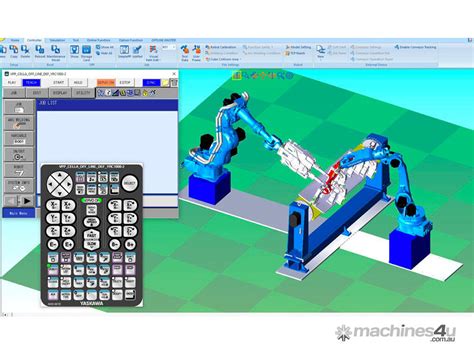Yaskawa MotoSim Comment Commands: Explained Simply
MotoSim EG-VRC is a powerful robot simulation software package from Yaskawa. One of its often-underutilized, yet incredibly important, features is the ability to insert comments into your programs. These comments don't affect the robot's movements, but they significantly improve the readability and maintainability of your code. This guide will clarify how to use Yaskawa MotoSim comment commands, making your robot programs clearer and easier to understand.
Why Use Comments in Your Robot Programs?
Before diving into the specifics, let's understand why comments are crucial. Imagine opening a robot program written months or even years ago. Without comments, deciphering the logic behind each instruction can be a time-consuming and error-prone task. Comments act as annotations, explaining the purpose of code sections, helping future you (or your colleagues) understand the program's intent.
They are particularly important for:
- Improved Readability: Comments make complex programs much easier to follow.
- Enhanced Maintainability: When modifications are needed, comments guide you through the code's structure.
- Collaboration: Clear comments facilitate collaboration among team members.
- Debugging: Comments can pinpoint specific areas of concern during the debugging process.
How to Add Comments in MotoSim EG-VRC
Yaskawa MotoSim EG-VRC uses a simple, yet effective method for adding comments: the semicolon (;). Any text following a semicolon on a line is treated as a comment and is ignored by the robot controller.
Example:
; This is a comment explaining the purpose of the following move
MOVL P100, V100, FINE ; Move to position P100 at speed V100
; Another comment describing the next action
WAIT 1000 ; Wait for 1 second
In this example, the text after each semicolon is a comment. The robot controller will execute only the MOVL and WAIT instructions. The comments are purely for human readability.
What Types of Comments Should I Use?
Effective commenting isn't about simply adding any text; it's about adding meaningful comments. Here are some best practices:
- Explain the why, not the what: Don't comment on obvious actions. For instance, commenting
MOVL P100; Move to point P100is redundant. Instead, comment on the reason for moving to that point:MOVL P100; Move to part pickup position. - Use concise and clear language: Avoid overly long or complex comments.
- Comment complex logic: Focus your comments on sections of code that are difficult to understand at a glance.
- Keep comments up-to-date: When modifying your program, update the relevant comments to reflect the changes.
Beyond Basic Comments: Structuring Your Code
While semicolons provide basic commenting, structuring your code with blank lines and logical groupings significantly enhances readability. Think of it as adding visual separators to your program.
Example:
; --- Part Pickup Sequence ---
MOVL P100, V100, FINE ; Move to part pickup position
WAIT 1000 ; Wait for gripper to close
; --- Part Placement Sequence ---
MOVL P200, V100, FINE ; Move to part placement position
; --- End of Program ---
This approach uses blank lines and comments to visually separate distinct program sections, dramatically improving understanding.
Frequently Asked Questions
Are there any limitations to the length of comments?
While there isn't a strict character limit, excessively long comments can make your code harder to read. Aim for conciseness and clarity.
Can I use special characters in comments?
Yes, you can generally use most characters in your comments, but avoid using semicolons within the comment itself, as this might cause unexpected parsing issues.
Do comments affect the program's execution speed?
No, comments are entirely ignored by the robot controller and have no impact on execution speed.
Is there a difference between single-line and multi-line comments?
In MotoSim, each line beginning with a semicolon is treated as a separate single-line comment. There's no inherent multi-line comment functionality; you would need to use multiple semicolon-prefixed lines.
By effectively using Yaskawa MotoSim comment commands, you'll create more maintainable, readable, and collaborative robot programs, ultimately saving time and reducing errors in the long run. Remember, well-commented code is a sign of professional programming practice.

